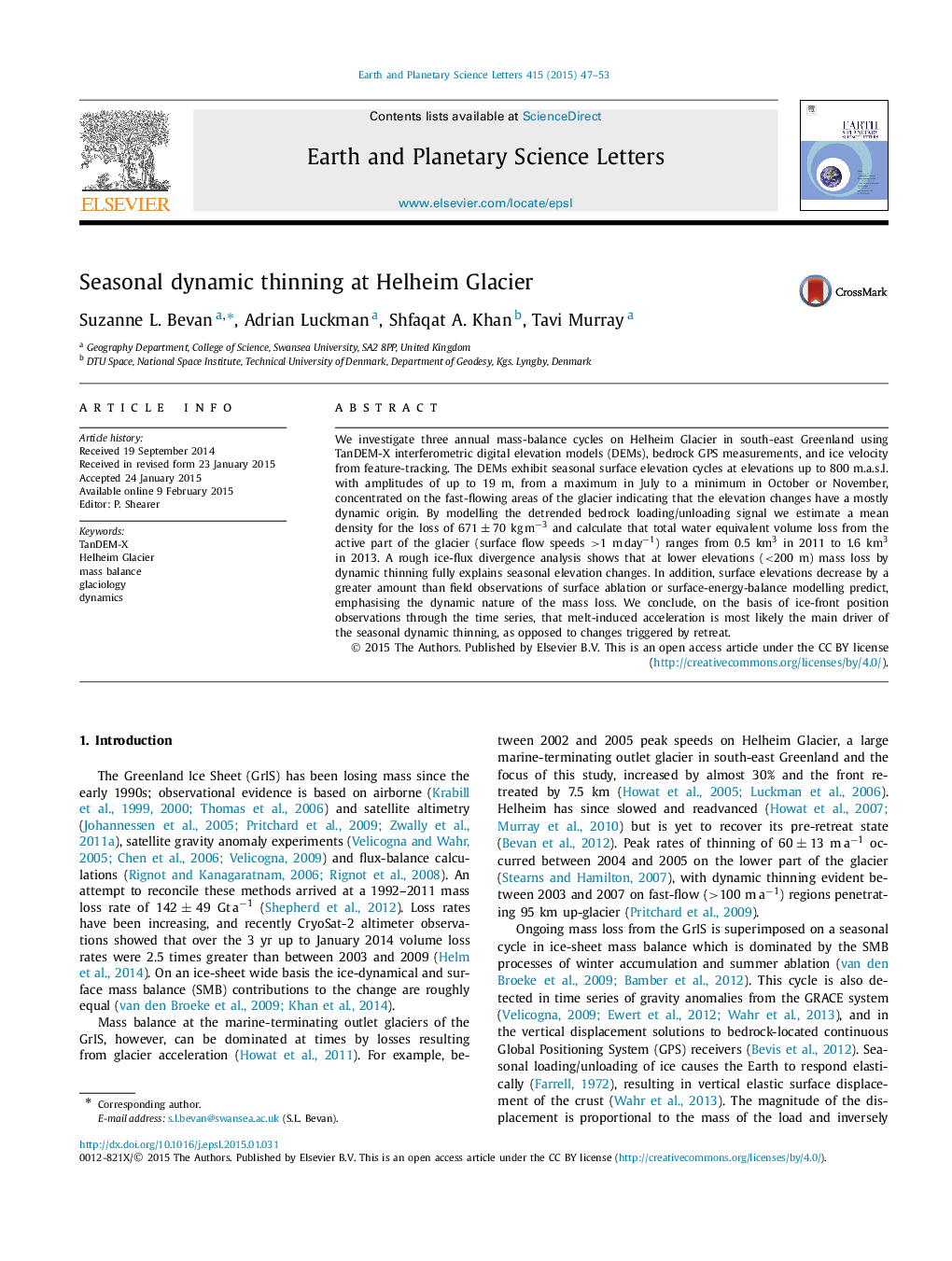| Article ID | Journal | Published Year | Pages | File Type |
|---|---|---|---|---|
| 6428537 | Earth and Planetary Science Letters | 2015 | 7 Pages |
â¢TanDEM-X DEMs are used to reveal seasonal thinning on Helheim Glacier.â¢Feature tracking for surface speeds ties the thinning to areas of fast-moving ice.â¢Bedrock GPS measurements are used to estimate an effective density for the ice loss.â¢Annual water equivalent volume loss ranges from 0.5 km3 in 2011 to 1.6 km3 in 2013.â¢We conclude that the thinning is dynamic and is driven by melt penetration to the bed.
We investigate three annual mass-balance cycles on Helheim Glacier in south-east Greenland using TanDEM-X interferometric digital elevation models (DEMs), bedrock GPS measurements, and ice velocity from feature-tracking. The DEMs exhibit seasonal surface elevation cycles at elevations up to 800 m.a.s.l. with amplitudes of up to 19 m, from a maximum in July to a minimum in October or November, concentrated on the fast-flowing areas of the glacier indicating that the elevation changes have a mostly dynamic origin. By modelling the detrended bedrock loading/unloading signal we estimate a mean density for the loss of 671±70kgmâ3 and calculate that total water equivalent volume loss from the active part of the glacier (surface flow speeds >1 mâdayâ1) ranges from 0.5 km3 in 2011 to 1.6 km3 in 2013. A rough ice-flux divergence analysis shows that at lower elevations (<200 m) mass loss by dynamic thinning fully explains seasonal elevation changes. In addition, surface elevations decrease by a greater amount than field observations of surface ablation or surface-energy-balance modelling predict, emphasising the dynamic nature of the mass loss. We conclude, on the basis of ice-front position observations through the time series, that melt-induced acceleration is most likely the main driver of the seasonal dynamic thinning, as opposed to changes triggered by retreat.
